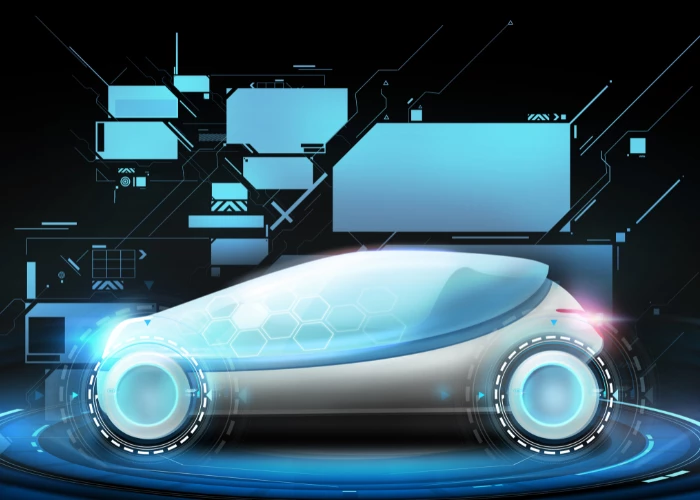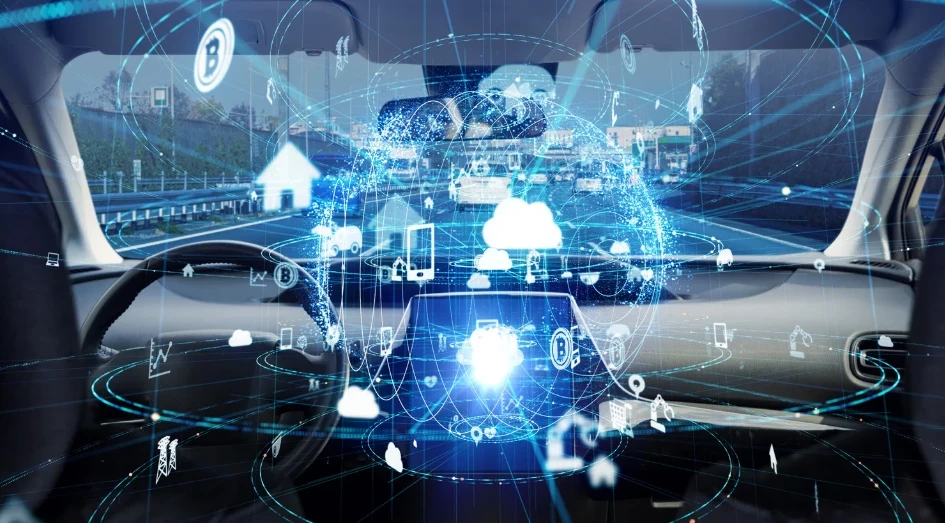Braking System Redundancy and Autonomous Driving
Add bookmarkWe have recently seen the evolution of many advanced assisted driving technologies as the automotive industry moves ever closer to fully autonomous driving. Automated emergency braking is one of many examples of how electronic controls have made driving safer, but such systems are clearly designed to work in tandem with a human in control of the vehicle.
© adimas - fotolia
Several automakers and technology companies have vowed to be the first to introduce self-driving cars, and many claim the technology is already there or at least very close. However, taking the next steps to partial and fully autonomous vehicles comes with many challenges beyond the base technology. The race for self-driving capability has moved faster than the legislative background around it, and questions remain about the regulatory framework for the introduction of such vehicles, as well as issues of responsibility in the case of system failure. Ultimately the most pressing question is that of safety, and while various studies and experiments have found that computers are safer drivers than humans, there must be satisfactory fail-safe procedures and systems in place.
One of the key questions on the lips of those involved in autonomous driving is that of redundancy. If the driver is able to relinquish attention to the road and control of the vehicle, systems must be built into self-driving cars which can mitigate against the failure of other systems and/or assume control in their place. In a similar vein to the aerospace industry where redundant systems are built into planes, the automotive industry will need to demonstrate systems which will protect the occupants of a car, even if systems for functions like braking and steering were to fail.
The Road to Full Automation
The oft-used phrase of ‘hands on the wheel, eyes on the road’ is no longer applicable when we talk about autonomous driving, but how does the industry progress from one extreme to the other? In an ideal world it might be easier to imagine a move from the present situation directly to a fully autonomous vehicle, particularly in light of recent high profile accidents in Tesla cars. However, that would be a giant step for the public, for legislators, for the technology, and for the industry. In reality, a gradual process is underway, and one challenge is introducing new autonomous capability in a safe and controlled manner.
The Society of Automotive Engineers’ vehicle standards committee defined six levels of driving automation to help industry and consumers understand how vehicle automation can progress safely. Those levels are defined as:
- Level 0 - No automation
- Level 1 - Driver assistance
- Level 2 - Partial automation
- Level 3 - Conditional automation
- Level 4 - High automation
- Level 5 - Full automation
At level 2, the driver is in charge; and at level 4, the car is in control. Getting from one to the other is a technological challenge.
Redundant Systems in Autonomous Vehicles
The rapid adoption of AEB systems is a fine example of semi-autonomous technology that is quickly being integrated into new vehicles. However, to move to a scenario where the car is fully responsible for braking requires a much greater level of robustness and reliability.
When the driver is removed from the situation, the requirements on reliability specifications for actuation systems increase significantly. Today’s vehicles are designed to be fail-safe; if a single component on today’s vehicles fails, it fails into a safe state. However, autonomous vehicles will have to be fail-operational; so that if any single component fails, the automatic system continues to operate.
[inlinead]
System redundancy is a key area of discussion, and automakers are weighing up the balance between cost, weight, complexity and robustness of such ideas. The simplest answer is to have two of every system, so in the event of a failure the secondary system steps in. Clearly this has potential cost implications, and another strategy is to assess components to determine whether they need specific back-up, or if another component can provide redundancy.
Tier One supplier Bosch uses this approach in its automatic braking systems. These systems currently use Bosch’s electronic stability program (ESP) to actuate braking; while the Bosch iBooster is an electronic control that boosts braking power. When used together, the company says that they can develop a system whereby the two work as redundant braking systems. Similarly, the brake system could be used as a back-up to the steering system by braking individual wheels to control the direction of the car.
Tesla Crashes Pose Self-Driving Questions
Earlier this year the National Highway Traffic Safety Administration (NHTSA) announced that it is investigating two crashes involving Tesla models equipped with the manufacturer’s ‘autopilot’ system. The first incident was in Florida, resulting in a fatality as neither driver nor car engaged the brakes when a tractor-trailer crossed the vehicle’s path.
With so many new driver assist and safety systems coming onto the market, regulators have struggled to keep pace. Another recent announcement by the NHTSA is a proposal to automakers that they voluntarily submit details of self-driving vehicle systems for a 15 point ‘safety assessment’. The proposal comes with an omission that the industry is outpacing public policy, and it is interesting that the NHTSA only had authority to ask Tesla for details of its system after the crash.
Several concessions are being made to companies in the US testing autonomous technology, including the call for a single, national set of rules for self-driving cars. In return the NHTSA wants automakers to answer safety assessments within six months, and to report to regulators on results of self-driving tests. In addition, legislators have said they will consider whether OEMs should be required to submit technology to regulators for approval before they are offered for sale, in a similar process to that used by the Federal Aviation Administration with aircraft.
Volvo’s Autonomous Road Test
One manufacturer synonymous with safety is Volvo, and earlier this year it announced an autonomous driving trial with production vehicles that will have redundancy for every system.
The test project will take place in London and Gothenburg, and will be the first of its kind to put fully autonomous vehicles in the hands of the public. The UK trial is named ‘Drive me London’, and will use real families driving autonomous cars on public roads. Launching in 2017, by 2018 the project will include 100 autonomous vehicles.
The cars will only be permitted to operate in self-driving mode in test areas and in certain situations, but they will be fully autonomous production vehicles. That, in theory, means occupants can sit back and relax, rather than keeping one hand on the wheel at all times. Volvo has said it will install back-up systems to provide redundancy for every system from brakes to steering.
Summary
Autonomous driving is the next step in transportation, and technology is developing at a rapid pace. Self-driving vehicles have already been successfully tested in controlled conditions, but the transition to public roads is extremely difficult. System redundancy provides the most practical solution to ensuring reliability, and technology firms are investigating ways to use different systems as back-ups to each other.
Regulations and standards are already being implemented in Europe and the US, and safety concerns will ultimately lead to testing and approval processes for autonomous technology. We could even see the industry follow the route of aviation, where redundancy is commonplace for critical systems, and technology is regulated by authorities.
Sources:
- https://www.media.volvocars.com/global/en-gb/media/pressreleases/189969/volvo-cars-to-launch-uks-largest-and-most-ambitious-autonomous-driving-trial
- http://www.nhtsa.gov/About+NHTSA/Press+Releases/nhtsa-iihs-commitment-on-aeb-03172016
- http://safety.trw.com/wp-content/uploads/2014/12/eBook_AutomatedDriving.pdf
- http://www.euroncap.com/en/vehicle-safety/the-rewards-explained/autonomous-emergency-braking/
- http://www.scientificamerican.com/article/deadly-tesla-crash-exposes-confusion-over-automated-driving/





















